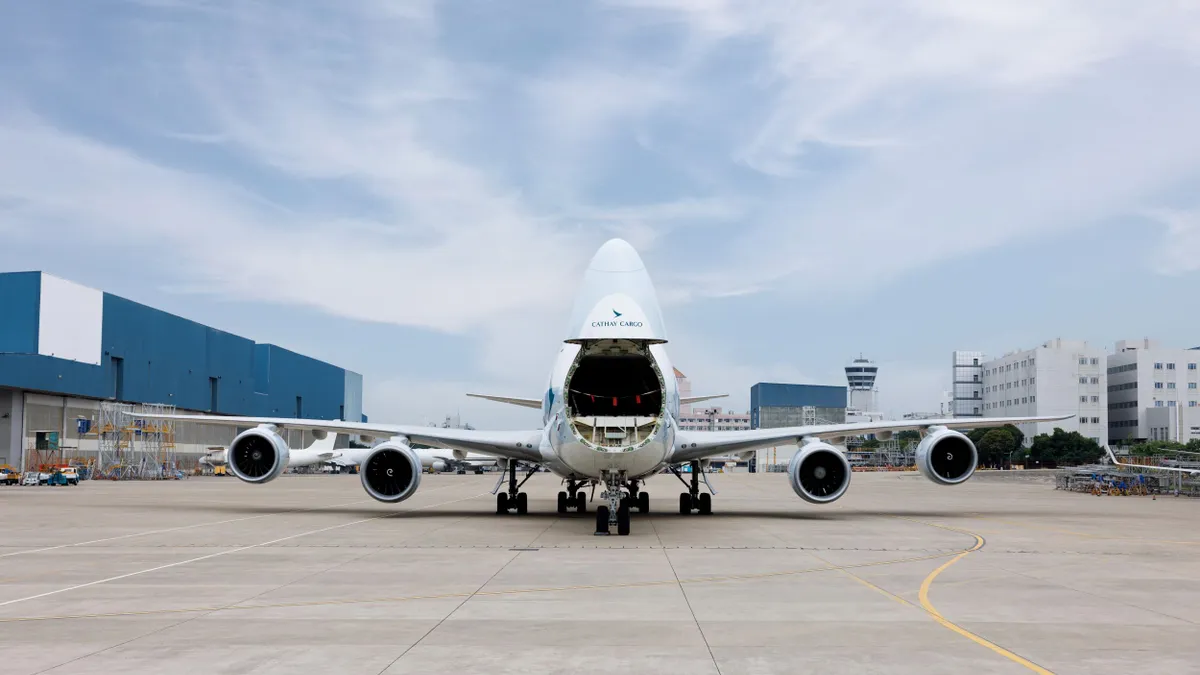Shippers and carriers always view the holiday season with concern, if not dread. Do we have enough staff? Vehicles? Inventory? Are we ready for the online purchases and, later, the returns?
One issue that seems to have accompanied the new year is a global air freight shortage. Where once capacity exceeded demand, that’s been reversed, said Stuart Lund, VP of Global Air Freight, UPS Global Freight Forwarding. Over the past 16 months, he said, multiple factors have contributed to the shortage.
“Most of the 2017 market tightening that derived from increased demand and capacity shortages originated out of Asia and into the U.S. and Europe,” he said. “However, during peak season in 2017, strikes and weather in Europe created a backlog and delivery delays for that region as well. In addition to increased demand driven by a robust global economy, factors impacting capacity ranged from a shortage of qualified pilots to a surge in freighter cancellations out of Asia,” Lund added.
New orders and production boost manufacturing sector
The Purchasing Manager’s Index (PMI) measures the economic health of the manufacturing sector. Researched and published monthly by the Institute for Supply Management, the PMI is based on five major indicators: new orders, inventory levels, production, supplier deliveries and the employment environment.
According to the December 2017 report, manufacturing expanded as the PMI registered 59.7%, an increase of 1.5% from the November report.
“This indicates growth in manufacturing for the 16th consecutive month, led by strong expansion in new orders and production with hiring growing at a slower rate and supplier deliveries continuing to struggle,” Timothy R. Fiore, chair of the ISM Manufacturing Business Survey Committee, wrote in the report.
A reading above 50% indicates that the manufacturing economy is generally expanding; below 50% indicates that it is generally contracting.
“PMI showed a rise globally and predominantly out of Asia and Europe,” said Lund. “From an industry perspective, technology has enabled more B2B e-commerce as customers are needing a faster turnaround. This also has driven the demand for air freight.”
Could intermodal help meet e-commerce demands?
Air freight is being impacted today by the rise of e-commerce from both a B2C and B2B perspectives. Needs and expectations, added Lund, have changed with technology, which also impacts freight shipping. “Our customers’ own sales channels pressure them to replenish their inventories and distribution faster,” he said, requiring planning and collaboration with a forwarder who can provide multiple solutions.
Because of e-commerce’s continued growth, 3PLs are offering more multi-modal services. For example, UPS Trade Direct is an alternative that moves multiple smaller shipments in a consolidated freight shipment that moves internationally and then is broken down and distributed through the company’s small-package network.
One region hit particularly hard this peak season has been Europe, where volume has caused air carriers to max their capacity and driving up spot rates to $13/kg (approximately 2.2 pounds), according to a report by Allyn International.
As a result of these capacity issues, carriers are unable to meet the transit times and pricing requirements that were agreed upon in contracts with clients.
Not only are airlines at max capacity, the report continues, but in many cases, entire airports don’t have enough gates or ground personnel to handle flights.
“As air terminals continue to become overcrowded the end result will be even longer wait times to pick up or deliver freight. Per the International Air Transport Association (IATA) there are currently 189 full airports around the world. It is estimated that upward of another 100 airports may be declared full within the next decade.”
Beyond a capacity shortage
Lucas Kuehner, global head of air freight at Panalpina, told Lloyd’s Loading List that the issue goes beyond capacity to scarcity.
“Looking at the situation in Asia and Europe specifically, we do not have the classic capacity shortage,” he said. “The available aircraft are there and being deployed and flying record hours to meet demand. But the entire system is reaching it’s natural limits. Demand is overwhelming right now and freighter and belly capacity is being thrown in from all sides. Aircraft, including our own, are clocking up extremely high flying hours, necessitating more technical or maintenance stops. That in turn causes delays, gets schedules out of step and puts additional pressure on the rotations.”
What can shippers do?
UPS’s Lund says shippers are working to improve the forecasting of their future shipments and relying on forwarders to provide up-to-date information on market conditions. In turn, UPS continually monitors the market to provide information to its customers.
He says some key points to remember include:
- Because of e-commerce and B2C, customers are expecting faster, better shipping solutions for their freight shipments.
- Forecasting and anticipating demand is critical. Shippers need to plan further ahead for their supply chain needs—in particular during peak season, which is before the holidays for air freight and when capacity typically tightens.
- Shippers should expect rates to go up as demand increases and limited capacity exists out of Asia to both the Americas and Europe.
- Work with your carriers to anticipate the impact and pre-plan lift solutions through alternate gateways.
So, do your homework. Before you know it, another peak season will be here and air freight capacity issues will crop again. Will you be ready?





















